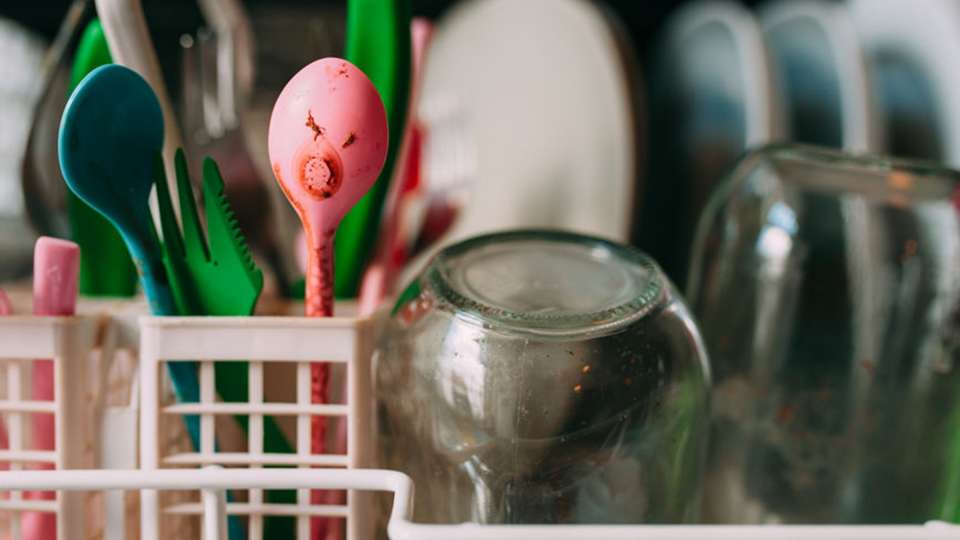
You know bringing your own lunch to work is cheaper and healthier than eating at a restaurant or getting takeout. But whenever you go to put your lunch bag in the office refrigerator, you’re confronted by the same dull horror of strange odors, moldy fruit and unidentifiable blobs that may once have been edible but now look like they were dredged from a swamp.
It’s enough to make anyone cringe, if not forego using the fridge entirely.
“Work kitchens can be a problem because no one takes responsibility,” says Marilyn Roberts, Ph.D., a microbiologist and professor at the University of Washington School of Public Health.
For people who aren’t particularly germ-phobic, it might not be that much of a problem. For those who are, it might seem like something out of a horror movie. Either way, there are some common-sense cleaning strategies that can benefit everyone.
“There are ick factors that aren’t a problem and there are ick factors that are,” Roberts says.
Here’s how to navigate the treacherous wilderness that is a gross office kitchen, from which areas are germiest to which cleaning strategies work best.
Microwave marsh
Ah, the microwave. That dreaded den of splattered food from who knows when, always smelling of fish even if no fish is present.
For cleaning a dirty microwave, Roberts has a go-to strategy: Mix baking soda with water in an open, microwaveable container, and heat the mixture for 30 seconds to a minute. Then get scrubbing. The mixture helps remove stains and will combat any malodorous leftovers from that coworker who is obsessed with broccoli.
To make sure you’re not part of the problem, cover food you microwave with a paper towel, plate or something else that can handle the heat. This also prevents your food from getting contaminated by someone else’s lunch remains.
Refrigerator rainforest
Much like rainforests, office fridges are biodiverse — except, instead of birds of paradise, they’re full of myriad types of mold caused by leftovers your coworkers forgot about months ago.
Less-than-spotless fridges are likely rife (and ripe, tbh) with bacteria and mold because of our human tendency not to discard spoiled food quickly enough. And no, the fridge’s coldness won’t stop bacteria and mold from thriving. If food is stinky, fuzzy, discolored or otherwise off-looking, just compost it. (And don’t be passive-aggressive and leave it in the fridge for someone else to deal with.)
If you’re one of those people who forgets when you put food in the fridge, try to get in the habit of writing the date on your leftovers so you won’t have to deal with the mystery.
You may be asking: What about those mysterious fridge shelf stains? One way to prevent them is to line the shelves with paper towels, which will absorb any spills, and then replace them when they get dirty.
Cutting board chasm (of bacteria)
You know that cutting board that someone brought in one day and is now a permanent resident, shared by all? Just know that if it’s made of wood, it’s impossible to get completely clean. Plus, colonies of bacteria are probably making themselves at home in the valleys of knife-marks made from cutting up those salad ingredients.
Opt instead for a sturdy plastic cutting board or something made of less porous material than wood.
Shared sponge slough
Roberts has one rule, and one rule only, for any kind of sponge or item you use to scrub dishes with: If it can’t be put in a dishwasher, it’s festering with bacteria (possibly even mold) and should be tossed. (Like, immediately.)
Dishwasher-safe sponges and cloths are fine to use as long as they’re cleaned regularly. If something like that isn’t available, use paper towels or other disposable products.
Sink(ing) sea of sorrows
Don’t be that person who leaves dirty dishes in the sink, full of water, and then forgets to clean them for a week. A lukewarm, wet environment is the perfect place for bacteria to thrive, Roberts says.
Leaving dishes uncleaned for a day probably won’t hurt anyone, but resist the urge to submerge them in a miniature swamp. Instead just let them sit out dry. Better yet, clean them as soon as you’re done using them. That way, it won’t become a chore you have to do later in the day when you just want to go home.
Toaster tundra
Toasters aren’t major offenders when it comes to bacteria or mold because microbes can’t survive in a dry environment. However, that crumb tray that looks like a gravel yard could be a fire hazard, so make sure to check on it every so often and dump the crumbs if they get too plentiful.
Kettle bog
If your office has a shared teapot, you may have noticed that after a while a white film accumulates on the inside of it. No, it’s not mold: it’s calcium buildup. And it’s probably safe, especially if the water in the teapot is always getting boiled, Roberts says.
“It also depends on the kind of water you’re using, but in Seattle we don’t have bad water,” she says.
Still, if you want to go ahead and scrub the teapot, it’s not going to hurt.
Cleaning tips for shared kitchens
No matter how disgusting your office kitchen appears, you don’t necessarily need fancy cleaning products: Soap and water can sufficiently clean most surfaces, Roberts says.
If you insist on using disinfectant, note that you’ll need to clean all crumbs, stains, splashes, scum and other organic matter off the surface before using the disinfectant. Disinfectants are inactivated by organic materials.
If your office kitchen has a dishwasher, that’s ideal; use it. But don’t let stuff sit in there for weeks, because bacteria will definitely be growing even if you can’t see it, Roberts says.
Ridding your office kitchen of bacteria may seem like a daunting task, but keep in mind that the best way to prevent germs from spreading is also the simplest: Keep your hands clean.
“People need to wash their hands before and after cleaning, and before and after preparing food,” Roberts says. “Just use common sense.”
And maybe share your newfound expertise in kitchen cleaning with your coworkers; you shouldn’t be the only one taking responsibility for keeping your workplace clean.

 Healthy ideas for your inbox
Healthy ideas for your inbox





